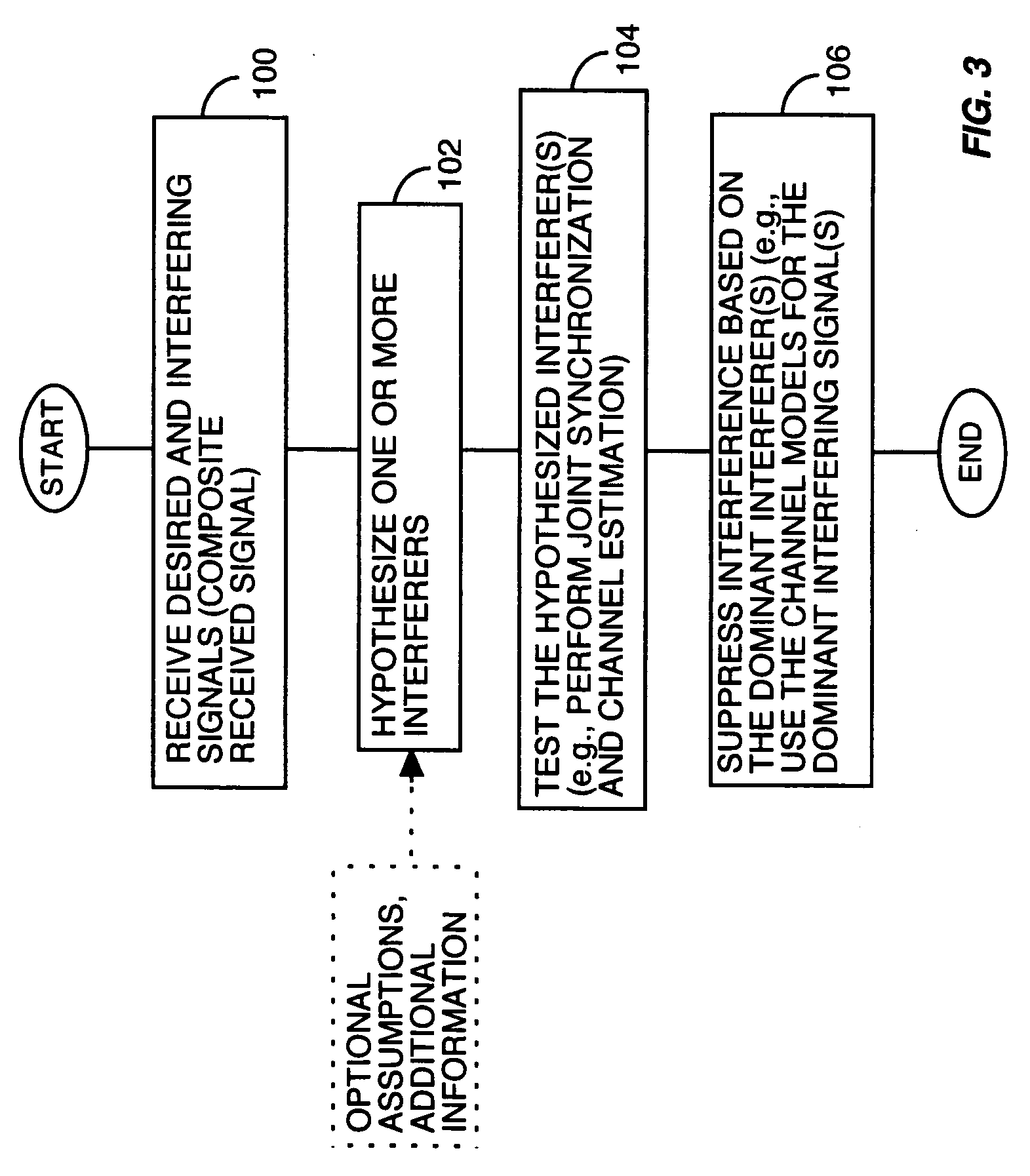Method and apparatus for multi-user interference determination an rejection
a multi-user interference and determination method technology, applied in the field can solve the problems of complex problems, high degree of signal corruption, and difficult reception conditions of wireless communication receivers
- Summary
- Abstract
- Description
- Claims
- Application Information
AI Technical Summary
Problems solved by technology
Method used
Image
Examples
Embodiment Construction
[0015]FIG. 1A presents a simplified illustration of a wireless communication receiver 10, which may operate in a Time Division Multiple Access (TDMA) based wireless communication network, such as IS-136, GSM, or GSM / EDGE communication networks, wherein it receives desired and interfering signals in each of one or more assigned communication timeslots. According to one or more exemplary embodiments of the present invention, receiver 10 combats interference by identifying “on-the-fly” the dominant interfering signals in each of one or more communication timeslots based on hypothesizing one or more “interferers,” and testing those hypotheses to determine which one(s) best correspond to the actual interference experienced in each timeslot. Identification of the dominant interferers allows receiver 10, for example, to suppress interference in the received signal.
[0016]FIG. 1B illustrates an exemplary receiver circuit 12 for use in receiver 10 to support the above functionality. It shoul...
PUM
 Login to View More
Login to View More Abstract
Description
Claims
Application Information
 Login to View More
Login to View More - R&D
- Intellectual Property
- Life Sciences
- Materials
- Tech Scout
- Unparalleled Data Quality
- Higher Quality Content
- 60% Fewer Hallucinations
Browse by: Latest US Patents, China's latest patents, Technical Efficacy Thesaurus, Application Domain, Technology Topic, Popular Technical Reports.
© 2025 PatSnap. All rights reserved.Legal|Privacy policy|Modern Slavery Act Transparency Statement|Sitemap|About US| Contact US: help@patsnap.com



